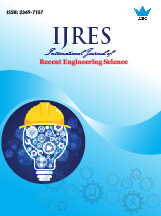High Industrial Silicon Solar Cell Efficiency and Performance
 |
International Journal of Recent Engineering Science (IJRES) |  |
| © 2016 by IJRES Journal | ||
| Volume-3 Issue-6 |
||
| Year of Publication : 2016 | ||
| Authors : A. Habib, M. T. Ahmed, J. C. Jimeno, M. A. Rasool, M. I. Abdel-hamied |
||
| DOI : 10.14445/23497157/IJRES-V3I6P103 |
How to Cite?
A. Habib, M. T. Ahmed, J. C. Jimeno, M. A. Rasool, M. I. Abdel-hamied, "High Industrial Silicon Solar Cell Efficiency and Performance," International Journal of Recent Engineering Science, vol. 3, no. 6, pp. 16-19, 2016. Crossref, https://doi.org/10.14445/23497157/IJRES-V3I6P103
Abstract
our goal is to achieve low cost effective Czochralski (Cz) silicon crystalline materials and rapid process technologies that is favorable for industry. At high temperature phosphorus diffusion silicon solar cell, we found phosphorus precipitated in the form of dead layer due to over solubility limit, Due to this layer the recombination centers appear, as a result auger recombination increase. These recombination centers increase saturation current density as a result cell Voc and Jsc decrease due to high recombination rate. At low temperature p diffusion we found that about 80- 90% P is active but at high temperature about 50-60% P is active. Emitters obtained by a single step thermal are in range of 7-8 x1019 cm -3 with sheet resistance ~ 60 Ω/□ and junction depth0.71 µm and saturation current of emitter is 130 fA/cm2 .Our target in texturing optimization work have been met, that we decrease the mount of NaOH we used and IPA, give good wafers reflectivity about 11%. The phosphorus profiles were proceed experimentally, with only pre-deposition process by adding a drive-in after introducing thermal dry oxidation step after diffusion process for various diffusion temperature. The Voc and Jsc values calculated by PC1D simulating program, using a Gaussian model with values of the emitter surface concentration Ns and sheet resistance for the corresponding values of depth junction.
Keywords
Industrial Silicon solar cell, PC1D simulating program, Phosphorus profiles, Silicon texturization.
Reference
[1] S. Werner, E. Lohmüller, S. Maier, A. Kimmerle, A. Spribike, S. Wasmer, F. Clement, A. Wolf, " Process optimization for the front side of the p-type Silicon ", 29th European PV Solar Energy Conference and Exhibition. (2014) Amsterdam.
[2] P. P. Altermatt, and K. R. McIntosh, "A roadmap for PERC cell efficiency towards 22%, focused on technology-related constrains", Energy Procedia 55, 17-21 (2014).
[3] V.Fano, M.A.Rasool, A.Habib, A.Otaegi, J.R.Gutierrez, J.C.Jimeno, N.Azkona. ‖Lowly Doped Emitters for Crystalline Silicon Solar Cells‖. 42nd IEEE Photovoltaic Specialist Conference. New Orleans.(2015).
[4] D.E. Aspnes, ―New Developments in Spectroellipsometry: The Challenge of Surfaces,‖ Thin Solid Films 233, 1–8, Oct. 1993.
[5] D.E. Aspnes and A.A. Studna, ―High Precision Scanning Ellipsometer,‖ Appl. Opt. 14, 220–228, Jan. 1975.
[6] R.H. Muller, ―Principles of Ellipsometry,‖ in Adv. in Electrochem. and Electrochem. Eng. 9, (R.H. Muller, ed.), Wiley, New York, 1973, 167–226.
[7] J. Knobloch, S. W. Glunz, D. Biro, W. Warta et al., "Solar cells with efficiencies above 21% processed from Czochralski grown silicon", Proceedings of the 25th IEEE Photovoltaic Specialists Conference, (IEEE; New York, NY, USA 1996) 405-408
[8] R.B. Fair, J.C.C. Tsai, A quantitative model for the diffusion in silicon and the emitter dip effect // J. Electroch. Soc., 124, p. 1107 (1977).
[9] P.A. Basore, "Numerical modeling of textured silicon solar cells using PC-1D," IEEE Transactions on Electron Devices, 37(2) (1990) 337–343.
[10] D.T. Rover, P.A. Basore and G.M. Thorson, "Solar cell modelling on personal computers," Proc. 18th IEEE Photovoltiac Specialists Conference, Las Vegas, (1985) 703– 709.
